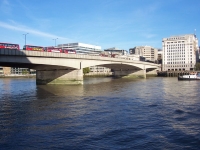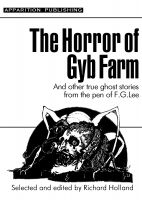Radcliffe Tower
Radcliffe Tower is all that remains of a fifteenth century (1403) manor house and is a Grade I listed building. At twenty feet high, this ruined remnant of the manors demolition in the nineteenth century is linked to a tragic tale of a stepmother arranging the murder of her husband’s daughter and is reputed to be haunted by a phantom Black Dog.
In Traditions of Lancashire by John Roby 1872, he recounts the ballad of the murder, written by Dr Percy and entitled ‘The Lady Isabella’s Tragedy’, though he changes the names to Lord Thomas and Ellenor. Note though that the tale, as far as I am aware, has no basis in fact.
 According to Roby: ‘To this place and family are attached the tradition and ballad given by Dr Percy, under the name of Isabella, but here applied to a Lord Thomas and faire Ellenor, father and daughter, whose figures are supposed to be graven on a slab in the church, which the common people, concluding, I suppose, from its whiteness, that it was meant as an emblem of the innocence it is said to cover, have mutilated by breaking off small fragments, as amulets for the prevention or cure of disorders.’
According to Roby: ‘To this place and family are attached the tradition and ballad given by Dr Percy, under the name of Isabella, but here applied to a Lord Thomas and faire Ellenor, father and daughter, whose figures are supposed to be graven on a slab in the church, which the common people, concluding, I suppose, from its whiteness, that it was meant as an emblem of the innocence it is said to cover, have mutilated by breaking off small fragments, as amulets for the prevention or cure of disorders.’
There was a lord of worthy fame,
And a hunting he would ride,
Attended by a noble traine
Of gentrye by his side.
And while he did in chase remaine,
To see both sport and playe,
His ladye went, as she did feigne,
Unto the church to praye.
This lord he had a daughter deare,
Whose beauty shone so bright,
She was beloved both far and neare
Of many a lord and knight.
Fair Ellen was this damsel call’d,
A creature faire was she;
She was her father’s only joye,
As you shall after see.
Therefore her cruel stepmother
Did envye her so much,
That daye by daye she sought her life,
Her malice it was such.
She bargain’d with the master-cook,
To take her life awaye;
And, taking of her daughter’s book,
She thus to her did saye:–
Go home, sweet daughter, I thee praye,
Go hasten presentlie;
And tell unto the master-cook
These wordes that I tell thee:
And bid him dresse to dinner streight
That fair and milk-white doe,
That in the parke doth shine so bright
There’s none so faire to showe.
This ladye, fearing of no harme,
Obey’d her mother’s will;
And presentlye she hasted home,
Her pleasure to fulfil.
She streight into the kitchen went,
Her message for to tell;
And there she spied the master-cook,
Who did with malice swell.
Nowe, master-cook, it must be soe,
Do that which I thee tell:
You needes must dresse the milk-white doe
Which you do knowe full well.
Then streight his cruell bloodye hands
He on the ladye layd,
Who quivering and shaking stands,
While thus to her he sayd:–
Thou art the doe that I must dresse,
See here, behold my knife;
For it is pointed, presently
To ridd thee of thy life.
Oh then, cried out the scullion-boye,
As loud as loud might bee,
Oh save her life, good master-cook,
And make your pyes of mee!
For pitye’s sake, do not destroye
My ladye with your knife;
You know shee is her father’s joye,
For Christe’s sake, save her life.
I will not save her life, he sayd,
Nor make my pyes of thee;
Yet, if thou dost this deed bewraye,
Thy butcher I will bee.
Now when this lord he did come home
For to’sit downe and eat,
He called for his daughter deare
To come and carve his meat.
Now sit you downe, his ladye say’d,
Oh sit you down to meat;
Into some nunnery she is gone,
Your daughter deare forget.
Then solemnlye he made a vowe
Before the companie,
That he would neither eat nor drinke
Until he did her see.
Oh then bespake the scullion-boye,
With a loud voice so hye–If
now you will your daughter see,
My lord, cut up that pye:
Wherein her flesh is minced small,
And parched with the fire;
All caused by her stepmother,
Who did her death desire.
And cursed bee the master-cook,
Oh cursed may he bee!
I proffer’d him my own heart’s blood,
From death to set her free.
Then all in blacke this lord did mourne,
And, for his daughter’s sake,
He judged her cruell stepmother
To be burnt at a stake.
Likewise he judged the master-cook
In boiling lead to stand;
And made the simple scullion-boye
The heire of all his land.
Concerning the haunting by a Black Dog, Roby says the apparition has never been seen by two people at the same time and ascribes it to over imagination and fear. He does also gives a description of Radcliffe Manor by Dr Whitaker (History of Whalley ) before its demolition, which allows a greater appreciation of the tower that remains to us today.
Dr Whitaker says, “The remains of Radcliffe Tower prove it to have been a manor-house of the first rank. It has been quadrangular; but two sides only remain.” A licence to kernel and embattle shows the date of its erection, or rather rebuilding, to be in the fourth year of Henry IV., by James Radcliffe, who, we find by the pedigree, was the eldest son of William Radcliffe. He married Joan, daughter to Sir John Tempest of Bracewell, in the county of York.
“The noble old hall is forty-three feet two inches in length, and in one part twenty-six feet, in another twenty-eight feet in width. The two massy principals which support the roof are the most curious specimens of ancient wood-work I have ever seen. The broadest piece of timber is two feet seven inches by ten inches. A wall-plate on the outside of one beam, from end to end, measures two feet by ten inches. The walls are finished at the square with a moulded cornice of oak.
“At the bottom of the room is a door opening into one of the towers, the lower part of which only remains, of massy grout-work, and with three arches, each furnished with a funnel or aperture like a chimney. On the left side of the hall are the remains of a very curious window-frame of oak, wrought in Gothic tracery, but square at top. Near the top of the hall, on the right, are the remains of a doorway, opening into what was once a staircase, and leading to a large chamber above the kitchen, the approach to which was by a door of massy oak, pointed at the top”.




Re: Radcliffe Tower
Fifty years ago I was in the same class at school as the boy whose father farmed the land upon which Radcliffe Tower stands. I once went there with him to see it after school.It was in a sorry state and I think that the farm was too as his father was struggling financially. I can’t remember his name so if anyone out there knows the family name or how to find it please let me know here. Melvyn Fairclough.